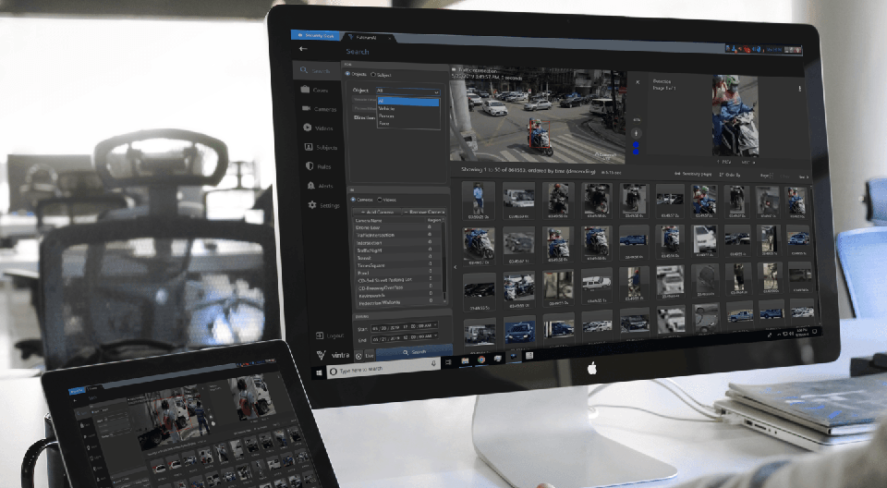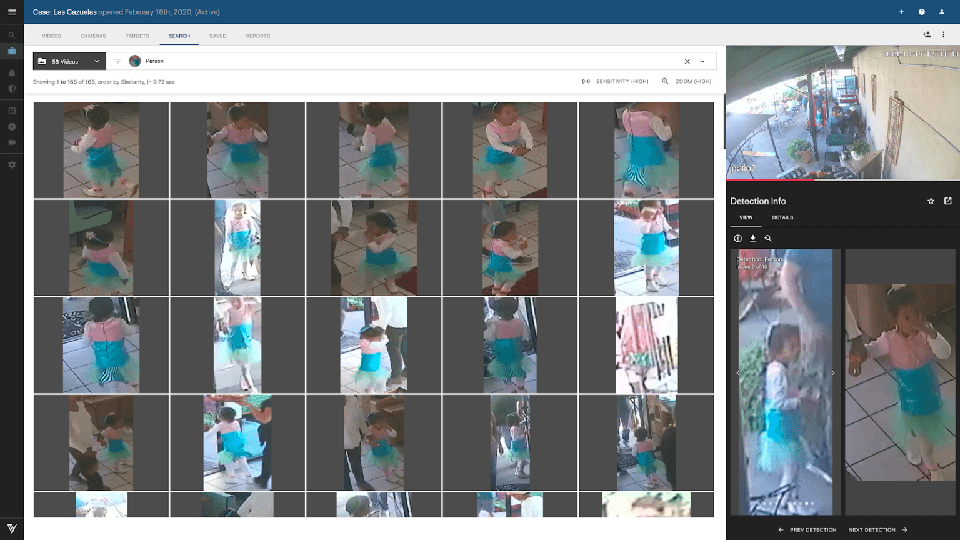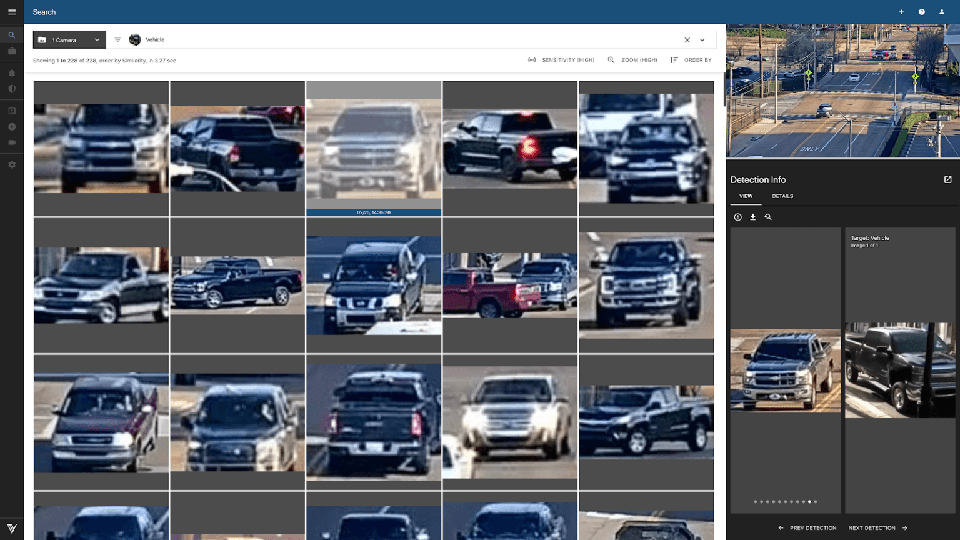SIA New Member Profile: Vintra Inc.

New Security Industry Association (SIA) member Vintra Inc. provides artificial intelligence (AI)-powered video analytics solutions that transform real-world video into actionable, tailored and trusted intelligence. The company is headquartered in San Jose, California, with its machine learning and software engineering team based in Barcelona, Spain.
SIA spoke with Luca Angeli, vice president of demand generation at Vintra, about the company, the security industry and working with SIA.
Tell us the story of your company.
LA: Vintra was founded in 2016 by Brent Boekestein and two leading computer vision experts, Dr. Ariel Amato and Dr. Angel Sappa, with a singular mission: to empower security professionals to create the safest and smartest environments through AI. Brent had helped build a venture-backed company in the Internet of Things space that provided analytics, including for security use cases, and Ariel was a key researcher at the Computer Vision Center (CVC) at the University of Barcelona, one of the leading computer vision research labs in the world. Brent and Ariel reviewed many products in the video security industry and felt that none fully addressed the needs of organizations to effectively manage large amounts of video in the way the market had come to expect. In doing early research with potential customers, they learned that while customers were generally happy with their cameras and overall image quality, they were not happy with their ability to search stored video for relevant events or use the video for proactive alerting or business intelligence. Several potential customers who were ahead of the technology curve also pointed out problems in analyzing video from body cameras, drones or security robots, where the background was unstable, presenting a challenge to existing AI platforms in use for search enhancement. Ariel saw a correlation between the work he was leading at the CVC and emerging market needs and felt that a solution could be built to better address modern video analytics challenges in the marketplace.
Vintra was born out of this research and is now driving AI-powered security intelligence at a variety of customers in different industries and large and small law enforcement organizations and applications in the U.S. intelligence community. Vintra relies on its ProPartner Network made up of security integrators across the United States and in select international locations to ultimately deliver the product to these customers.
What solutions/services does your business offer in the security industry? And what makes your offerings/company unique?
LA: Vintra offers its AI-powered video analytics platform, FulcrumAI, in both cloud (FulcrumAI Investigator) and on-premises (FulcrumAI RealTime) deployment architectures. FulcrumAI can analyze live or recorded video and accurately identify common threat objects and objects of interest to security personnel. These objects include people, two- and four-wheel vehicles, bags, long guns, faces and a face covering detector. Actions, such as Person Down, are also supported. Metadata about these objects, such as color, direction of travel, location or zone within the scene and subtypes where applicable (e.g., truck, bus SUV and other vehicle subtypes, and male/female gender, presence of eye glasses and similar characteristics for people) are logged for each from of video, which allows operators to execute a search across several hours of video and multiple cameras, with results in seconds. Similarly, alerts can be created to proactively notify operators when specific objects appear in a scene or perform a specified action.
The system can accurately analyze video streams with resolutions from Common Interchange Format to 1080p or higher and frame rates as low as 2 frames per second (FPS). A typical deployment will use streams of 4-5 FPS and 720p-1080p resolution. FulcrumAI also includes an advanced face recognition capability, offering accuracy and performance on par with leading systems in the marketplace. In recognition of sensitivities around face recognition use, Vintra does not charge extra for this functionality, and system administrators can disable the face recognition functionality without impacting other parts of the system when regulations or business preferences require it.
Unique features of Vintra’s FulcrumAI include:
- It supports video with stable or unstable backgrounds equally, body camera or pan tilt zoom tour video can be analyzed with the same accuracy as video from a traditional fixed camera.
- It does not require scene calibration or learning, which allows FulcrumAI to begin working immediately with high accuracy, even in low-traffic areas.
- It supports a broad spectrum of use cases – investigative search, real-time situational awareness and preventative alerts for objects, events and specific individuals and vehicles in a single application.
- On-premises and cloud platforms use the same code base, offering consistent performance, accuracy and user interface, allowing customers to migrate from one platform to the other or use a hybrid solution.
- Algorithms, data sets and learning processes are all built using technology developed by Vintra, with no reliance on third-party data, open source projects or external patents.
- It offers full API support for all functionality, no licenses are required for integrations or extensions.
FulcrumAI is sold exclusively through Vintra’s ProPartner network. FulcramAI Investigator is most popular with organizations that spend 16 or more hours per month reviewing security video to search for evidence or gather insight to incidents under investigation. This product is particularly valuable to organizations that deal with a large volume of external video, such as campus or municipal police departments, and also corporate security investigators who prefer to use a tool external to the corporate video management system to better protect the privacy of details related to internal investigations. The cloud-based architecture of FulcrumAI Investigator also eliminates the need for on-premises hardware and related overhead. FulcrumAI Real Time is ideally suited to organizations that primarily use video from their own surveillance cameras or want the ability to both search video evidence and also generate proactive alerts on incidents that present a potential security risk. Fulcrum AI Real Time both supports live video and can also import external video for search in the same way as FulcrumAI Investigator.

What is something we might not know about your company – or something new you are doing in security?
LA: Though Vintra is relatively new to the security industry, we have managed to establish an enviable customer base relatively quickly. Two of the five largest companies in the world use our products daily and are continuously expanding their deployments. We have also secured a strategic investment from In-Q-Tel, which has increased our exposure to the national security and intelligence markets, where our customer base has also expanded. We also have several customers in other strategic verticals such as health care, law enforcement and transportation.
Our reidentification technology consistently impresses customers and helps us win new accounts. This functionality, which we market as Target Tracker, enables users to quickly search for a specific person or vehicle across hours of video and multiple cameras to find where else that person or vehicle appeared in their surveillance video; this extends to searching across video from body cameras or dash cameras as well. Target Tracker builds a dynamic appearance profile of the object and does not rely on face recognition or license plate recognition for its search. Users can build target lists, associating multiple objects together, such as to search for any appearance of a person or their vehicle simultaneously.
What is your company’s vision, and what are your goals for the security industry?
LA: Our goal is to be the company that forward-thinking integrators and professional end users think about and reach out to when they need video analytics for security, safety and building operation use cases. To achieve this, we know that we need to continue to set the pace for development in the analytics space and support our integrator partners and end users in their businesses as well. It is not an easy goal, but we feel we have the resources and technology to make it happen. We also want to extend our capabilities beyond video as a data source and include data from other systems such as access control, environmental sensors and building management systems.
What do you think are the biggest opportunities in the security industry right now?
LA: Adapting to new trends and requirements from customers. We believe that businesses are going to need to reevaluate how their security infrastructure can be used in new ways to provide a sense of safety to employees and customers, which will likely impact how systems are deployed, with more consideration for cloud platforms, and increased expectations for video surveillance software to be able to interpret what the cameras are viewing. Simply knowing there is a person present is no longer enough; now, recognizing how the person may be acting and recognizing whether someone appears to present a potential safety risk are much higher considerations than they were previously.
What are your predictions for the security industry in the short and long term?
LA: In the short term, new sources of video, including body cameras, drones and user-filmed video, will become a common component of video stored and analyzed by medium to large organizations. Security teams will be more distributed, with a higher percentage of team members working from home. This will make features such as easy secure remote access and HTML clients key factors in purchase decisions
Long-term, correlating multimodal sensor inputs and situational awareness platforms will be prevalent in larger organizations. Base-level analytics, such as simple but accurate person and vehicle detection, will become commonplace, even in entry-level systems. The amount of data a security investigator needs to analyze and manage for a common incident will grow exponentially and drive the need for more advanced tools.

What are the biggest challenges facing your company and/or others in the security industry?
LA: Helping the public understand the capabilities and ethics of deploying new security technologies and accurately communicating what systems are, and are not, capable of and what is state of the art so that users can set expectations accordingly.
What do you enjoy most about being at your company – and in the security industry?
LA: That we get to work on using a transformative new technology to make the world a safer place so people can flourish.
What does SIA offer that is most important to you/your company? And what do you most hope to get out of your membership with SIA?
LA: Access to forward-thinking integrator partners that can help us realize our vision. We hope to grow our ProPartner Network and get great feedback from partners to continually improve and innovate our product.
The views and opinions expressed in guest posts and/or profiles are those of the authors or sources and do not necessarily reflect the official policy or position of the Security Industry Association.
